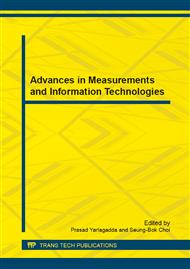[1]
Cve-2007-4993: Xen guest root can escape to domain 0 through pygrub. http: /cve. mitre. org/cgibin/cvename. cgi?name=CVE-2007-4993, (2007).
Google Scholar
[2]
Cve-2007-5497: Vulnerability in xenserver could result in privilege escalation and arbitrary code executioner. http: /support. citrix. com/article/CTX118766, (2007).
Google Scholar
[3]
Amd-vtm nested paging. Technical report, AMD, (2008).
Google Scholar
[4]
Cve-2008-2100: Vmware buffer overflows in vix api let local users execute arbitrary code in host os. http: /cve. mitre. org/cgi-bin/cvename. cgi? name=CVE-2008-2100, (2008).
Google Scholar
[5]
X. Z. Ahmed Azab, Peng Ning. Sice: A hardware-level strongly isolated computing environment for x86 multi-core platforms. In 18th ACM Conference on Computer and Communications Security, (2011).
DOI: 10.1145/2046707.2046752
Google Scholar
[6]
D. Champagne and R. Lee. Scalable architectural support for trusted software. In High Performance Computer Architecture (HPCA), 2010 IEEE 16th International Symposium on, pages 1–12. IEEE, (2010).
DOI: 10.1109/hpca.2010.5416657
Google Scholar
[7]
X. Chen, T. Garfinkel, E. Lewis, P. Subrahmanyam, C. Waldspurger, D. Boneh, J. Dwoskin, and D. Ports. Overshadow: a virtualization-based approach to retrofitting protection in commodity operating systems. In ACM SIGARCH Computer Architecture News, volume 36, pages 2–13. ACM, (2008).
DOI: 10.1145/1353534.1346284
Google Scholar
[8]
S. Chhabra, B. Rogers, Y. Solihin, and M. Prvulovic. Making secure processors os-and performance friendly. ACM Transactions on Architecture and Code Optimization (TACO), 5(4): 16, (2009).
DOI: 10.1145/1498690.1498691
Google Scholar
[9]
S. Chhabra, B. Rogers, Y. Solihin, X. Prvulovic, M. Chen, T. Garfinkel, E. Lewis, P. Subrahmanyam, C. Waldspurger, D. Boneh, J. Dwoskin, and D. Ports. Secureme: a hardware-software approach to full system security. In Proceedings of the international conference on Supercomputing, pages 108–119. ACM, (2011).
DOI: 10.1145/1995896.1995914
Google Scholar
[10]
E. Keller, J. Szefer, J. Rexford, and R. Lee. Nohype: virtualized cloud infrastructure without the virtualization. In Proceedings of the 37th annual international symposium on Computer architecture, pages 350–361. ACM, (2010).
DOI: 10.1145/1815961.1816010
Google Scholar
[11]
K. Kortchinsky. Hacking 3d (and breaking out of vmware). BlackHat USA, (2009).
Google Scholar
[12]
D. Lie, C. Thekkath, and M. Horowitz. Implementing an untrusted operating system on trusted hardware. ACM SIGOPS Operating Systems Review, 37(5): 178–192, (2003).
DOI: 10.1145/1165389.945463
Google Scholar
[13]
D. Lie, C. Thekkath, M. Mitchell, P. Lincoln, D. Boneh, J. Mitchell, and M. Horowitz. Architectural support for copy and tamper resistant software. ACM SIGPLAN Notices, 35(11): 168–177, (2000).
DOI: 10.1145/356989.357005
Google Scholar
[14]
G. Neiger, A. Santoni, F. Leung, D. Rodgers, and R. Uhlig. Intel virtualization technology: Hardware support for efficient processor virtualization. Intel Technology Journal, 10(3): 167–177, (2006).
DOI: 10.1535/itj.1003.01
Google Scholar
[15]
T. Ristenpart, E. Tromer, H. Shacham, and S. Savage. hey, you, get off of my cloud! Exploring information leakage in third-party compute clouds,. Computer and Communications Security, (2009).
DOI: 10.1145/1653662.1653687
Google Scholar
[16]
G. Suh, D. Clarke, B. Gassend, M. Van Dijk, and S. Devadas. Aegis: architecture for tamper-evident and tamper-resistant processing. In Proceedings of the 17th annual international conference on Supercomputing, pages 160–171. ACM, (2003).
DOI: 10.1145/782814.782838
Google Scholar
[17]
J. Szefer, E. Keller, R. Lee, and J. Rexford. Eliminating the hypervisor attack surface for a more secure cloud. Technical report, Technical Report CE-L2011-004, Princeton University Department of Electrical Engineering, (2011).
DOI: 10.1145/2046707.2046754
Google Scholar
[18]
R. Wojtczuk. Subverting the xen hypervisor. BlackHat USA, (2008).
Google Scholar


